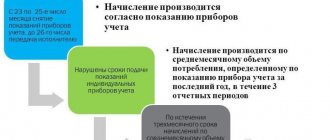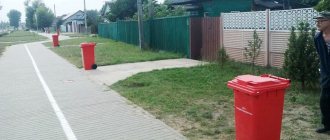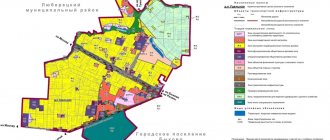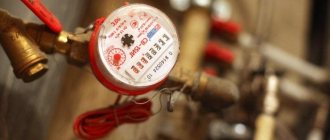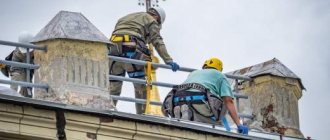What is housing maintenance in the receipt?
The full list of services included in the maintenance of housing is contained in the Methodological Manual for the Repair and Maintenance of Housing Stock.
It is stated here that housing maintenance implies a whole range of work and services performed that are related to the maintenance of home-related devices, communications and property. The work must be carried out regularly, that is, its frequency is ensured throughout the entire operational period of the house with the sole purpose of long-term preservation of its proper technical and sanitary-hygienic condition.
These are the works:
- For technical supervision of the current condition of the property of the house;
- To prepare all technical devices and equipment in the house for seasonal use;
- Concerning the elimination of emergencies, breakdowns and restoration of life support;
- For cleaning and removing various waste from the territory of the house.
This is a brief listing of the work related to housing maintenance. The full list of services and works included in the concept of “housing maintenance” and displayed in receipts sent to residents is quite voluminous.
Each resident has every right to have information about what they regularly pay for, what they can expect, and how, if necessary, they can demand that the housing department perform the work properly.
Management Authority
The property of an apartment building associated with ensuring the operation of all systems of the facility (except for the private one, that is, apartments and privatized premises) is subject to a special type of property - common shared property. This means that all issues regarding it are resolved through general meetings (meetings) of residents (owners).
That is, citizens manage apartment buildings directly, but of course, they do not have the skills for maintenance, in addition, this requires a significant investment of time and effort, so they hire special organizations (MC) or create citizens' associations (HOAs).
A special agreement is signed with the management company; with the HOA you can do without it (although it is not prohibited), since it operates on the basis of the Charter. A type of HOA are consumer cooperatives for housing or for special activities related to it.
Having drawn up an agreement or Charter, these institutions take responsibility for the maintenance and care of the common property. This does not deprive residents of the right to inspect and check the condition of the building, monitor it and control the progress of repairs. They interact with the management company or homeowners association.
Requirements for the use of unoccupied squares in apartment buildings
Law on privatization of housing stock in the Russian Federation 2021 in the latest edition
The premises in question in an apartment building should be distinguished from a common area. The key point of differentiation is whether the object in question has a legal owner.
They are usually formed by transforming an ordinary apartment in an apartment building into a non-residential one, so they belong to commercial premises: they are located in residential buildings or in close proximity to them. Any activity that harms residents, or production whose operation violates sanitary standards for pollution levels or exceeds the permissible noise level, is prohibited there.
At the legislative level of the Russian Federation, a number of rules have been established that owners must adhere to:
- The need for a separate entrance.
The Housing Code, which came into force in 2005, prohibits the use as an entrance of the same option or the same premises that are used to access apartments.
Premises that were transferred to non-residential use before the new rule came into force can continue to be used in the same format. But for modern facilities, the presence of a separate entrance is a prerequisite, even if the specified room is located on the second floor or above. Fire safety requirements.
Fire safety standards are considered the most difficult to comply with due to the fact that some of them are simply physically impossible to comply with (for example, organizing a fire exit, which sometimes there is simply no place to equip it).
It is extremely rare that a fire causes damage only to the premises where it started - neighboring objects also suffer. And the owner of the premises in which the fire occurred will have to answer for this damage if he does not prove that he complied with all fire safety measures. Sanitary rules.
In rooms that are used for constant work of people, a certain level of natural light must be maintained. It is also necessary to regularly carry out dry and wet cleaning and ventilate the rooms. And if cafes are organized in non-residential premises, their work is coordinated with Rospotrebnadzor.
Drawing up an act
The document has its own design features. It is compiled in case of arrival:
- Commissions from the housing office;
- Those responsible for the damage;
- Witnesses.
Specialists take measurements, inspect the apartment, and ensure the integrity of the premises. After drawing up, the act is signed by all participants in the process, which confirms the accuracy of the documentation. You can write objections and justify them.
The presence of the other party is not necessary; you just need to attach photographs, video recordings and other confirmation of neighbors. Evidence may be useful in court when considering a case.
The amount of damage is determined after the work of experts. Then the act is transferred to the second party, who, if they agree, must sign it. It is advisable to have it certified by independent citizens. The results of the verification will be necessary when considering the case in court.
It is advisable to use a sample to fill out the document. All data is recorded only after specialists conduct an inspection. The following information must be recorded in the document:
- Date and time of the event;
- Where is the property located: address, floor, area;
- About the owner and residents;
- Presence of damage, condition of the apartment;
- Types of damage to repairs, furniture, equipment;
- Hidden damage;
- What did the commission do?
At the end, the details of the commission members must be indicated: full name, position, signatures. According to the Housing Code of the Russian Federation, an act can be drawn up on the basis of a sample in written form. It must contain information about the damage and the persons involved in the inspection. There are no specific rules for filling out documentation; you just need to describe the situation correctly and in detail.
According to the Housing Code of the Russian Federation, property owners must have an account with funds. They can only be used for repair work. The fund is formed on the basis of contributions from the owners. Some programs may accrue interest. If one of the owners sells his apartment, the buyer has the right to receive a share in the fund. After the privatization of housing has been completed, the owner has the same interests as other residents.
Purpose of the document
Sanitary norms, rules and hygienic standards for storing food in the refrigerator
These Rules establish the requirements, as well as the procedure for repair and maintenance of housing stock.
This is done for the following purposes:
- guaranteeing the safety of the housing stock of all forms of ownership;
- implementation of a unified policy in the housing sector aimed at ensuring compliance with the requirements of current standards stipulating the maintenance and repair of residential buildings and adjacent areas, engineering systems and structural elements;
- ensuring compliance with standards governing the maintenance and repair of housing stock, both by owners and authorized managers and organizations (regardless of the organizational and legal form) involved in servicing this housing stock.
Let's consider the general provisions of the Rules.
Maintenance
Accident in Novosibirsk in July 2021
Every residential property must comply with maintenance standards. The main responsibility of the responsible persons is the management of the housing stock. Service must be organized and work with other companies and suppliers. Maintenance includes:
- Interaction with landlords and tenants.
- Repair activities of objects and engineering systems.
- Regular inspections – identify the causes of deficiencies and create measures to eliminate them
- Performing seasonal work that is required for the normal life of people and the quality of functioning of engineering systems.
Proper landscaping of adjacent areas is necessary. Houses have systems for removing sediment and wastewater that cannot penetrate indoors. Responsible persons monitor the proper quality of waterproofing of the foundation, basements, plinths, stairs, attics, and elevators. Basement hydrants are installed in buildings for safety purposes.
Standards of cleanliness and procedures for cleaning entrances to the microdistrict
Sanpin for kindergartens with changes for 2021
Residents can only wait for scheduled repairs and drive away the pests themselves. Where and how to write a complaint If citizens know exactly how often they should clean up their entrance according to the law, but in practice these requirements are not met, SANPIN is not observed, residents of an apartment building have the right to write a complaint. You should proceed as follows:
- first, the complaint is filed in the name of the head of the housing and communal services management company, in which the essence of the complaint is described in free form and asked to understand the situation;
- if the letter remains unanswered, then the next authority is Rospotrebnadzor;
- if ignored, you must contact the Housing Inspectorate of the city or district;
- If this doesn’t help, go straight to the Prosecutor’s Office.
In the complaint (can be made in any form) it is important to indicate that the residents of the house do not like the way the management company employee cleans their place. Describe what is included in the concept of “dislike”
Cleaning of entrances by the management company: rules and consequences of non-compliance
From the twenty-third point, one can clearly identify actions related to the maintenance of premises located in an apartment building. These include:
- carrying out wet and dry cleaning in halls, vestibules, galleries, corridors, elevator cabins and landings, ramps, staircases;
- wiping dust that covers window grilles, window sills, stair railings, electric meter cabinets, mailboxes, low-current devices, door leaves, frames and handles, closers;
- cleaning window glass;
- removing dirt from protective devices. As a rule, these are metal gratings, cell covers, pits, and textile mats.
Conflict situations and methods for resolving them Today, apartment residents very often encounter poor quality cleaning in their hallways.
Utility payments for owners
Many people mistakenly understand the essence of the meaning of “non-residential premises”, confusing it with public places. Because of this confusion, many problems arise regarding the formation of estimated amounts for utilities. Payment for housing and communal services provided for non-residential properties is the responsibility of their owners, who on a general basis must pay resource-providing organizations for the maintenance of common property.
Determining the required tariffs is the responsibility of local governments, which form them using independent expert data. For the final results, the mentioned values are used only after their approval by a professional energy commission accredited by the State Construction Committee of the Russian Federation. And the payment itself is made personally by the owner of the non-residential premises directly - if there are contracts.
We talked about what is included in utilities for non-residential premises and how they are paid here.
Recalculation
The consumer has the right to submit a written request to recalculate the bills issued to him to the management company or other organization involved in servicing the home. In particular, this is possible in the following situations:
- if the owner or person registered in the housing does not use it for a long period. In this case, it is necessary to provide written evidence of this circumstance (a certificate from local governments of other regions, from the place of work, if it is located in remote areas, etc.);
- if the premises are not equipped with individual accounting and control devices. At the same time, there should be no technical capabilities for their installation, that is, if the situation is such that they cannot be installed due to circumstances beyond the control of the citizen;
- upon detection of poor quality of services, repairs, defects or deficiencies in the installed equipment.
Procedure for reducing utility bills
The amount of payment is reduced in proportion to the full calendar days of the violation from the price of poorly performed work or service (clause 10 of the Rules for changing the amount of payment...).
The amount of reduction is determined by the formula: the cost of the service is divided by calendar days per month. and multiplied by the number of calendar days during which the service was provided.
Those interested in legislation in the described area should take into account that with the adoption of the new edition of Resolution No. 491, the regulations that were the main ones on issues of tariffs and prices, namely Resolutions No. 89 and 392, lost force. Now the document we reviewed has replaced them and is the main one on this matter. topic.
Long-term storage technical documentation
Such documentation includes:
- passports (boiler and elevator facilities, for an apartment, each residential building and land plot);
- acts (acceptance of houses from construction companies, technical condition of a residential building for transfer of housing stock to another owner);
- diagrams (intra-house water supply networks, central heating, sewerage, heat, gas, electricity, etc.);
- design and estimate documentation plus as-built drawings for each house;
- site plan (scale 1:1000 - 1:2000) where residential buildings and structures are located.
Amendments to technical documentation for long-term storage should take into account changes in technical condition, major repairs, reconstruction, revaluation of fixed assets, etc.
Conditions and procedure for re-equipment
Refurbishment of premises (residential and non-residential) in houses can be carried out only after obtaining the appropriate permits.
This process may include:
- installation of a household electric stove instead of a gas stove;
- installation of a portable heating plumbing (gas) appliance;
- refurbishment or construction from scratch of toilets and bathrooms;
- replacement or laying of new pipelines (supply and discharge);
- replacement or installation of electrical networks (devices) for the installation of shower cabins and other appliances.
Redevelopment applied to residential premises may concern:
- partitions, their disassembly and transfer;
- doorways, their arrangement and transfer;
- multi-room apartments, their disaggregation (enlargement);
- kitchens and bathrooms, their arrangement as additional rooms;
- living space, its expansion due to auxiliary premises;
- vestibules, their construction and re-equipment.
Re-equipment is not allowed if as a result the following is violated:
- strength of load-bearing structures of buildings;
- operation of engineering systems and equipment;
- safety and appearance of facades;
- fire-fighting devices;
- living conditions of other citizens.
Otherwise, the tenant must restore the premises to their previous form (condition).
How objects are classified
The rules and regulations of technical operation indicate that the housing stock means all residential premises. Their inclusion in this category is not affected by the form of ownership that applies to them.
Such a fund includes directly residential buildings and apartments, as well as; specialized, including:
- shelter hotels;
- dormitories;
- objects of maneuverable fund;
- premises intended for refugees and forced settlers for the purpose of temporary accommodation;
- houses designed for single elderly people;
- boarding schools for people with disabilities and veterans;
- service premises.
The list is not closed; the last item on it shows other premises in other buildings that can be used for living.
The housing stock is also divided into:
| Private | This includes premises classified as private property, including:
Built in-house:
|
| State | A fund for departmental purposes, which is managed directly by the state, and on its behalf by enterprises with the right of economic management or institutions for operational management, while such legal entities are controlled by the central government; Areas that are owned by the subjects of the Federation, and directly by the same organizations as in the previous paragraph, but managed by authorities at the regional level; The Fund of Municipalities, considered as a separate item, since these bodies are not included in the state system, including:
|
| Public | That is, housing owned by organizations |
State Construction Resolution 170 with the latest amendments.
One of the most discussed and controversial documents in the housing and communal services sector is the Resolution of the State Construction Committee of the Russian Federation dated September 27, 2003 N 170 “On approval of the Rules and Standards for the Technical Operation of the Housing Stock” or simply: Resolution of the State Construction Committee 170 with the latest amendments (You can download the document at the end of the article)
The effect of this document causes serious difficulties in the work of management companies. So, for example, providers constantly refer to clause 5.6.24. Resolution 170 of the State Construction Committee (The housing maintenance organization is obliged to: ... ensure unhindered access for workers of communication enterprises to roofs and attic spaces).
Indeed, in the context of the Housing Code of the Russian Federation, there are Rules for the maintenance of common property approved by the Government of the Russian Federation. The Law of the Russian Federation dated December 24, 1992 N 4218-1, mentioned in this Resolution of the State Construction Committee 170, became invalid due to the adoption of the Federal Law dated December 29, 2004 N 189-FZ, which brought into force the Housing Code of the Russian Federation on March 1, 2005. That is, the controversial Rules were developed on the basis of a law, which was then repealed by the law that put the Housing Code of the Russian Federation into effect!
The introductory part of Gosstroy Resolution 170 speaks of the advisory nature of this document. In accordance with the All-Russian Construction Catalog (SK-1), the Rules are assigned the number MDK 2-03.2003 (that is, methodological documents). Rules of the State Construction Committee of the Russian Federation No. 170 are not a normative legal act.
How to apply it without taking into account the norms of the current housing legislation? For example, how to comply with the requirement that window frames in an apartment be the same color if, according to PP 491, they no longer belong to the common property of the house.
There are also arguments among supporters of the opinion that Gosstroy Resolution 170 should not be applied. However, not a single court, from justices of the peace to higher authorities, accepts these arguments and refuses to satisfy the plaintiffs’ demands to cancel the decision to prosecute under Art. 7.22 Code of Administrative Offenses of the Russian Federation.
New judicial practice
In paragraph 29 of the “Review of Judicial Practice of the Supreme Court of the Russian Federation No. 3 (2017)”, approved by the Presidium of the Supreme Court of the Russian Federation on July 12, 2017, the courts were directed to lower courts that “The management company, as part of the business activity of managing apartment buildings, may be held administratively liable according to Part 2 of Art. 14.1.3 Code of Administrative Offenses of the Russian Federation, and not under Art. 7.22 Code of Administrative Offenses of the Russian Federation.” And local government bodies carrying out control measures, if there is a corresponding law of a constituent entity of the Russian Federation, can draw up protocols only on those administrative offenses that are directly provided for in Part 7 of Art. 28.3 of the Code of Administrative Offenses of the Russian Federation (including part 1 of Article 19.5 of the Code of Administrative Offenses of the Russian Federation).
Further in this Review there follows a phrase that “puts everything in its place”:
Consequently, “State Construction Resolution 170 with the latest amendments” is alive and well. For violation of the Rules specified in this non-normative act, liability is provided for both management companies (under Part 2 of Article 14.1.3 of the Code of Administrative Offenses of the Russian Federation) and for HOAs/housing cooperatives (under Article 7.22 of the Code of Administrative Offenses of the Russian Federation).
“Rules and standards for the technical operation of housing stock” (the latest version can be downloaded from this link) were developed on the basis of Law No. 4218-1, PP No. 1289. Includes the latest update and additions made in 2021. The regulations determine the conditions for operation, overhaul, reconstruction of facilities, ensuring their safety.
Maintaining technical documentation is one of the factors described in the Rules. The normative act is obligatory for execution by all state authorities of Russia, supervisory institutions, and forms of local government.
Difference between technical standards and rules of use
Non-residential premises in an apartment building are real estate that is not intended for residential use by citizens. There is a certain set of rules on the basis of which you can use these objects without violating the law of the Russian Federation.
Common property and local area
Often, owners of premises in a residential building have controversial situations regarding the procedure for using the common territory. Based on paragraph 2 of paragraph 2 of Article 44 of the Housing Code of the Russian Federation, the law assigns all powers to the competence of the meeting of owners of premises in an apartment building (both residential and non-residential).
Such legal relations are reflected in the paragraphs “On the procedure for installing fences in local areas”, according to which “the installation takes place on the basis of the decisions made by the owners of the premises of apartment buildings” on whose territory the device is planned to be placed.
The stages of assigning shares in the right of common ownership in an apartment building for owners of non-residential premises are also controlled by Article 37 of the Housing Code of the Russian Federation in proportion to the entire area owned by a specific owner.
Read more about how common areas in a non-residential building and apartment buildings are paid for and who owns them, here.
Current and major repairs
The system of maintenance (maintenance and repair) of the housing stock guarantees the standard functioning of buildings throughout the entire service life of the building, including such work as:
- renovation of flooring;
- leveling and painting walls;
- replacement of consumables;
- repair of windows, doors or gates;
- regular cleaning of premises;
- maintenance of utility networks and other minor works.
The Civil Code of the Russian Federation, Part II, Chapter 34, Article 616 specifies who is responsible for major and current repairs of real estate. It follows from the law that “the tenant must maintain the property in good condition, make repairs at his own expense and bear maintenance costs, unless otherwise provided by the lease agreement,” because this is not only the right to use, but ownership of the premises.
Definition of the concept
There is no definition of “residential real estate” as such in the legislation of the Russian Federation. However, the Civil Code and the Housing Code emphasize the features that meet the basic requirements of the concept - to be an immovable and isolated object, with boundaries in the form of a floor, ceiling and walls with a mandatory entrance.
Theoretically, they can be grouped as commercial premises (shops, cafes or offices) located in the house as part of it. They also have owners: a certificate of registration by a specific person must be issued to the owners. The main difference between non-residential premises and residential premises is that they are not suitable for permanent residence and can only be used for public, administrative or commercial purposes.
In this case, a controversial question arises as to what rights persons have to non-residential premises. The general content of the term “ownership right” is specified in Article 209 of the Civil Code of the Russian Federation. In accordance with this article, the owner has the rights to own, use and dispose of his property. More striking examples of the difference between the “right of ownership” and the “right of operation” can be found in Chapter 34 of the Civil Code of the Russian Federation, which talks about the lease agreement.
Operation of a non-residential building - what is it? Operation of non-residential premises begins after completion of construction, reconstruction or redevelopment work, when the finished object is handed over by the contractor in the manner established by the project agreement. From this moment on, the legal owner has the following rights of use:
- use at your own discretion;
- compensation for losses received;
- termination of the contract at will.
Incidents of flooding and leakage
Cases of flooding of non-residential premises are considered a frequent occurrence. The culprit of the accident may be the owner of the apartment living on the floor above, utility services or the landlord if the injured party has entered into an agreement for non-residential premises.
Depending on the true cause of the problems that have arisen, the owners of the property may file a claim with their neighbors, the utility service (for servicing technical communications in an improper way) or the landlord.
Disputes regarding flooding of such premises are partly different from similar problems in living rooms due to differences in the functional purpose and definition of the boundaries of responsibility. In this case, claims for compensation for damage caused are regulated by the Housing Code and the Civil Code of Russia.
A person who legally owns non-residential premises has a number of rights that are protected by regulations. But at the same time, along with these privileges, the responsible person also receives a whole list of responsibilities, and the rights themselves begin to operate in full only when they have been registered by law.
Didn't find the answer to your question? Find out how to solve exactly your problem - call right now:
+7 (Moscow) +7 (St. Petersburg)
Transition to management of apartment buildings in accordance with standards
In accordance with Article 1 and 12 of Federal Law No. 184 of December 27, 2002 “On Technical Regulation”, standardization of the activities of management companies for managing apartment buildings is based on the voluntary application of regulatory documents.
To switch to MKD control according to GOST R, you need to fulfill 3 conditions:
- At a general meeting of premises owners, it is necessary to make a decision on the voluntary transfer of management of the apartment building and the implementation of work on the maintenance and routine repairs of common property in the house on the basis of national GOST R standards. Indicate in the decision of the home owners all selected national standards, approved requirements and the procedure for performing the work.
- QM specialists should study national standards in order to apply them in practice.
- The management company needs to implement management, personnel training, assessment and quality control systems. The management company will have to implement a system of assessment and quality control and at least once every 5 years in order for specialists to undergo advanced training (clause 9 of GOST R 56192–2014).
However, it should be taken into account that the standardization of the activities of a management company for the management of apartment buildings should not contradict compliance with licensing requirements, which is the fundamental principle of its work.
Multi-house HOAs
We remind you that according to clause 1, part 2, article 136 of the Housing Code of the Russian Federation, a partnership of homeowners or real estate can be created by owners in several apartment buildings located in the same neighborhood. This is allowed if these apartment buildings are located on land plots with a common border, within which there are utility networks or other infrastructure elements intended for joint use by the owners of the premises in these houses.
We also note that the decision to create such a HOA is made in each apartment building separately. The decision of the general meeting is considered adopted if at least 2/3 of the votes from 100% of the owners of premises in the apartment building vote for it.
An HOA that does not meet these requirements must be reorganized before July 1, 2021 (Article 5.1 of Federal Law No. 189 of December 29, 2004), unless the members of the partnership from among the owners of premises in the apartment building at the general meeting did not choose another method of managing such houses.
Preparatory work for seasonal technical operation
The purpose of the preparation is to ensure the period, quality of work for residents in normal conditions, and the functioning of utilities in winter.
The following actions are implied:
- Elimination of defects in walls, roofs, defects in facades, attic floors, basements. Replacement or repair of windows, doors, heating furnaces, all utility systems.
- Repairing the territory of the building to drain atmospheric and other waters from entrances and window pits.
- Installation of insulating materials on the foundation, basement walls, and plinths.
Preparing your home for winter.
Hydraulic tests of boiler rooms, heating areas, house heating systems, and ventilation are carried out. Utilities are provided with automation equipment, measuring instruments, shut-off valves, and backup pumps.
A prerequisite is maintaining logs of equipment breakdowns and repairs. Between heating seasons, retraining of operators of boiler houses, heating stations, and emergency services is organized.
In-house water supply, sewerage, shut-off valves, and gas supply are being restored. Unheated premises are equipped with technical equipment. Basements flooded with water are being pumped out and pipes are being repaired.
Responsibilities of citizens and legal entities
Citizens and legal entities are charged with the following responsibilities:
- related to the use of residential premises (utility premises, equipment) without infringing on the rights and freedoms of other citizens;
- careful attitude to the housing stock (land plots);
- compliance with sanitary and hygienic, environmental, architectural, urban planning, fire safety and operational requirements;
- timely payment of housing (utilities), payments on housing loans.
The owners of the housing stock, as well as their authorized representatives, must also make timely adjustments to the as-built documentation, which reflects the layout of the premises, structural elements and engineering equipment.
Maintenance of building structures of housing stock
The management organization maintains the temperature and humidity of the foundation and all basement walls and monitors their good condition. If defects are identified, the company carries out repair work to prevent deformation.
Employees of the company periodically inspect buildings, install beacons on faults, and study the reasons for their appearance. Inspection of the condition of the soil, foundation, and load-bearing walls is carried out by specialized institutions according to a drawn up agreement.
Wall inspection
The organization's engineering and technical personnel inspect brick and reinforced concrete walls for settlement, delamination and destruction.
Acceptable sizes of cracks in a structure:
- panels – 0.3 mm;
- at joints – 1.0.
It is not permitted to loosen the fastenings of cornices and balconies, or to wet them with atmospheric or other precipitation.
If rotting of wooden walls in the housing stock or fungal damage occurs, the technical department is called for removal. Increased air permeability is eliminated by sealing joints and sealing cracks. Wooden plinths, combined with window openings and drain boards, are tightly fitted, thereby reducing humidity.
Residential facades
Destructions of the cladding, paint layer, plaster, and brickwork are eliminated as they are identified. Larger defects are removed during major repairs.
If defects are detected in the structure, the following measures must be taken:
- remove loose elements;
- beat the plaster;
- repair or replace damaged parts.
The work is carried out by special enterprises.
“Rules, standards for the maintenance and operation of residential buildings” () are mandatory for all management structures, regardless of their form of ownership. They organize repairs, restore buildings to acceptable living conditions, and also conduct an examination of residential buildings.
Watch the video: “Preparing housing stock for the heating season.”
Maintenance and repair of housing stock
The term defines the totality of work necessary to maintain elements, intra-house communications, specified conditions, equipment modes, as well as technical structures.
The maintenance system, including maintenance and extraordinary repairs of the housing stock, ensures the functioning of houses and utility networks during the period under consideration. This time is characterized by the use of the expenditure part of the budget for repairs. Control includes supervision over the condition of the building, its serviceability, and the establishment of various communications. The last type of work is carried out during scheduled and other examinations.
Current repairs of buildings consist of construction methods, the purpose of which is to eliminate breakdowns of equipment, communications, and elements aimed at maintaining the index.
Inspection of residential buildings
Such a technical examination identifies possible factors for the occurrence of defects and develops corrective measures. During the next spring inspection, the management structure instructs owners and tenants on the procedure for maintaining, operating apartments, communications, and equipment. Fire safety rules are also recalled.
Technical inspections are:
- general – the building, its structures, communications, appearance are inspected;
- partial - individual elements of a house or apartments.
The first are carried out annually - in the spring and before the start of the heating season. After natural disasters, unscheduled inspections are carried out. Utility networks, deformations of various elements, and equipment malfunctions are examined.
General scheduled diagnostics of the structure are carried out by the management organization or its authorized persons. Co-operative houses are diagnosed with the involvement of their board. Partial technical inspection of the fund by specialists from specialized services who ensure operability, repair of communications and equipment. Special control is given to buildings, elements that have physical wear and tear of more than 60%.
Detected defects in structures and mechanisms that may lead to the collapse of the building are eliminated by its owners. They involve specialized departments, indicating the repair deadline.
Repair current order
Carried out in accordance with technical instructions. The operation is carried out by specialized contracting companies for housing maintenance. The duration of repairs is determined according to the standards for each type of work. Their frequency is determined by a limit of no more than 5 years, taking into account various factors.
Work to maintain engineering communications of a housing structure is carried out by utility organizations that perform their maintenance:
- heating;
- all types of drainage;
- ventilation;
- electrical;
- gas supply.
An inventory of upcoming work, available in the annual procedure plan, is developed and coordinated with the owner of the housing stock, the enterprise. Coordination is carried out within a specified period.
If the building is due for major repairs in 60 months, the next technical supervision is limited only to setting up communications and preparing for summer.
Repair area
Current repairs include improving the condition of the premises. To do this, the ceilings are updated, the walls are painted, wallpapered, and glazed. Current repairs by residents of premises are carried out according to the standards prescribed in the Housing Code. It consists of measures to eliminate deficiencies in parts, devices and systems. Thanks to them, all operating equipment will be in order.
Current repairs are:
- Planned – inspection and prevention are carried out.
- Unplanned - urgent disposal of small defects at the request of residents, elimination of accidents and natural disasters.
When the repair is completed, it is checked by a commission that includes residents and representatives of the management company. The result must comply with safety standards so that the facility is suitable for human life. Overhaul is the improvement of the condition of buildings and its damaged parts. It allows you to eliminate or minimize damage to structures and engineering equipment.
Water, heat, gas and electricity meters are installed in houses. Repairs of objects intended for demolition, the repair of which would not be profitable, are carried out within 10 years, but only when the sanitary conditions of the residents are ensured. Since, according to the Housing Code of the Russian Federation, major repairs are carried out by the housing landlord, he provides the tenant with other housing for the duration of the work. In this case, termination of the contract is not required.
When major repairs are carried out, housing is provided from the flexible fund. If tenants refuse to move to a new premises, the landlord can go to court to resolve the situation. Moving to another property is paid for by the landlord.
A complex of maintenance is necessary for the proper functioning of buildings and engineering devices throughout their intended service life. The operation of the housing stock consists of work required to monitor the state of serviceability of all systems.
